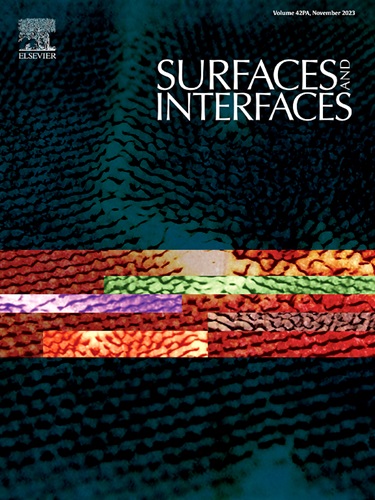Influence of water background pressure on removal rates of SiO2, Si and photo resist in reactive ion beam etching
IF 5.7
2区 材料科学
Q2 CHEMISTRY, PHYSICAL
引用次数: 0
Abstract
Process stability and reproducibility are indispensable for the high-precision production of optical components using reactive ion beam etching. The influence of residual water on the etching mechanism of SiO, Si and a photo resist has been investigated using the feed gas mixture of CHF and O with a radio-frequency broad beam ion source. Removal rates were determined for all materials at different water background pressures and etching yields were calculated using current density measurements of the ion beam. The composition of the reactive ion beam was investigated at three water background pressures using energy selective mass spectrometry. The composition of the near-surface was analyzed using two complementary techniques: time-of-flight mass spectrometry and X-ray photoelectron spectroscopy. A steady state oxygen-containing hydrocarbon and Si(OF) layer is found to form during reactive ion beam processing. A correlation is identified with the ion beam composition, whereby the composition and thickness of this layer is dependent on the water background pressure. Consequently, the etching yields and selectivities for the investigated materials are systematically altered. The technological consequences for reactive ion beam etching are discussed.

求助全文
约1分钟内获得全文
求助全文
来源期刊

Surfaces and Interfaces
Chemistry-General Chemistry
CiteScore
8.50
自引率
6.50%
发文量
753
审稿时长
35 days
期刊介绍:
The aim of the journal is to provide a respectful outlet for ''sound science'' papers in all research areas on surfaces and interfaces. We define sound science papers as papers that describe new and well-executed research, but that do not necessarily provide brand new insights or are merely a description of research results.
Surfaces and Interfaces publishes research papers in all fields of surface science which may not always find the right home on first submission to our Elsevier sister journals (Applied Surface, Surface and Coatings Technology, Thin Solid Films)
 求助内容:
求助内容: 应助结果提醒方式:
应助结果提醒方式:


